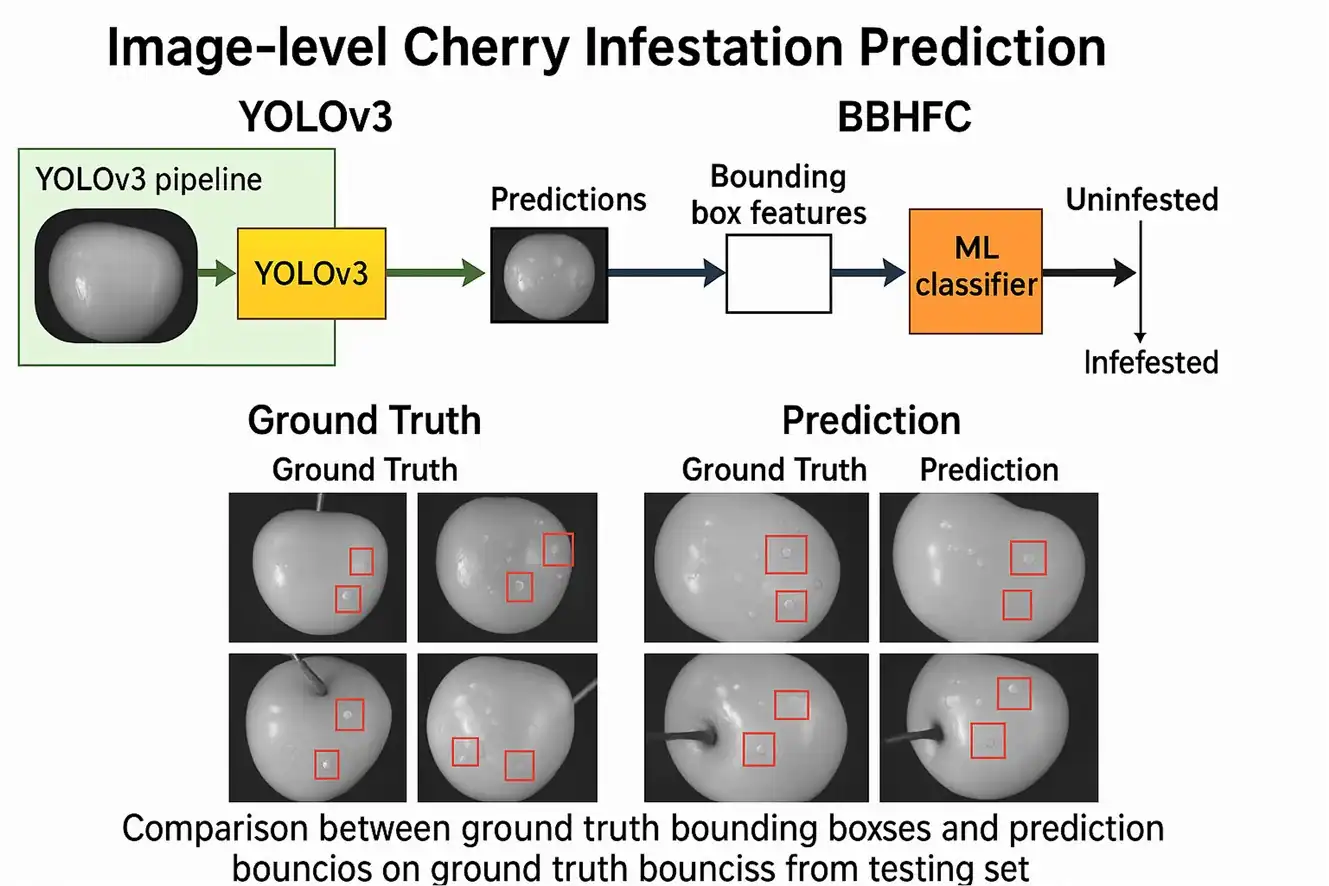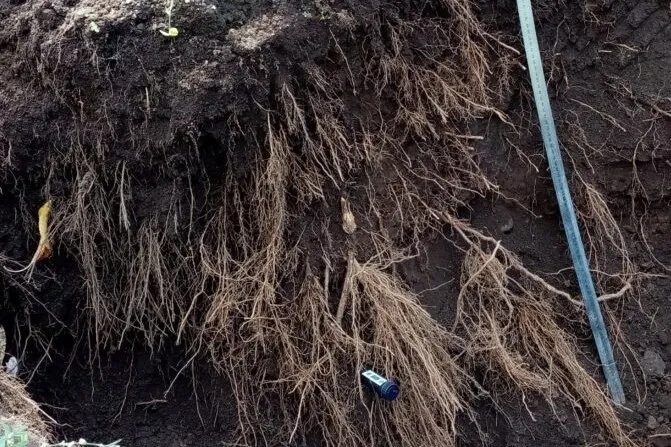The non-destructive detection of insect-infested fruit is a topic of great interest for biosecurity and for the quality management of horticultural supply chains.
In the case of the Queensland fruit fly (Qfly, Bactrocera tryoni), a highly damaging pest for international horticultural trade, the difficulty of identification stems from the fact that oviposition marks are often minimal and hard to distinguish with the naked eye from natural pigmentation or mild mechanical damage.
A recent study proposed an innovative approach that integrates advanced optical imaging techniques with artificial intelligence algorithms to reliably detect oviposition punctures on fresh cherries.

Detection with hyperspectral images
Through the use of hyperspectral images (HSI), researchers identified 730 nm as the optimal wavelength to discriminate oviposition lesions from other superficial irregularities on the fruit.
This choice is based on the observation that, at 730 nm, damaged areas exhibit distinctive characteristics: dark spots with a whitish centre, while pigmentation and non-pest-related defects become less visible.
Building on this information, the researchers developed the first high-resolution, single-wavelength NIR image library dedicated to Qfly detection, containing more than 1,700 images acquired using a microscope and a modified near-infrared camera.
Oviposition spots were manually annotated, generating over 13,000 bounding boxes and more than 120,000 training patches, a dataset unprecedented in size and specificity.
Innovative analytical methodology
The novelty lies not only in the acquisition strategy but especially in the analytical methodology.
The researchers developed a machine learning (ML) framework known as the Bounding Box Histogram Fusion Classifier (BBHFC), which uses the output of a YOLOv3 model trained to identify oviposition punctures.
Instead of relying on a decision threshold applied directly to the object detector’s predictions (the YOLO-IP approach), BBHFC converts YOLO-generated bounding boxes into feature vectors based on confidence and class histograms, which are then processed by traditional classifiers such as decision trees, random forests or SVMs.
This strategy drastically reduces sensitivity to confidence thresholds and enables more robust performance in identifying infested fruit.

Results and performance
Results show that the BBHFC system significantly outperforms YOLO-IP in terms of accuracy, sensitivity, and specificity, achieving F1 scores above 0.93 at the image level and over 0.89 at the fruit level.
The decision tree model, in particular, achieved an optimal balance between sensitivity (0.9689) and specificity (0.9544).
The comparison with human visual inspection yielded striking results: five inspectors, evaluating 155 artificially infested cherries randomly mixed with control fruit, achieved an average accuracy of 60%, whereas the BBHFC model exceeded 89%.
This gap highlights the enormous potential of NIR imaging technologies combined with AI algorithms to support or complement human evaluation during grading operations, phytosanitary inspections, and pre- and post-border checks, activities that are costly yet essential for international trade.
Future applications and scalability
In conclusion, the technical and operational feasibility of single-wavelength NIR imaging proves excellent, particularly as a rapid and cost-effective alternative to hyperspectral imaging, which is currently difficult to apply in industrial settings due to cost and acquisition time.
The BBHFC framework stands out for its modularity and scalability, opening the way for potential integration into optical sorting systems currently used in fruit packing facilities.
Future developments will focus on reducing false positives, automating labelling procedures, and assessing the technology in high-speed industrial workflows, essential prerequisites for future commercial adoption.
Source: Yazdani, M., Bao, D., Zhou, J., Wang, A., & van Klinken, R. D. (2025). Single-Wavelength Near-Infrared Imaging and Machine Learning for Detecting Queensland Fruit Fly Damage in Cherries. Smart Agricultural Technology, 101090. https://doi.org/10.1016/j.atech.2025.101090
Source images: Yazdani et al., 2025
Andrea Giovannini
University of Bologna (IT)
Cherry Times - All rights reserved














